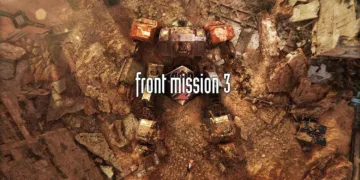“American Murder: Gabby Petito Season 1” presents a true crime narrative that scrutinizes the life and untimely end of Gabby Petito. This series focuses on Petito’s experiences as an aspiring vanlife vlogger whose online presence captured widespread attention. It tracks the unfolding events that led from her early days on social media to the tragic circumstances of her disappearance and the subsequent investigation into her death.
Gabby Petito emerged as a figure whose digital footprint revealed both the appeal and risks of online self-promotion in today’s media environment. Her efforts to present an appealing personal image as a vanlife influencer contrast sharply with the hidden tensions in her relationship with Brian Laundrie. The series presents these details without shying away from the painful realities behind carefully curated online personas.
The structure of the series is divided into three episodes, with each installment mapping a distinct phase of the events—from the initial depiction of a promising adventure to the unfolding of darker, more disturbing events. Key figures, including Brian Laundrie and members of Gabby’s family, feature prominently, offering firsthand accounts that enrich the narrative. This episodic design invites viewers to assess the interplay between personal ambition, digital identity, and the complex repercussions of a tragedy that captivated a wide audience.
Narrative Structure and Storytelling Techniques
“American Murder: Gabby Petito Season 1” is divided into three parts that trace the progression of events from a disturbing initial incident to the unraveling mystery and final investigation. The series starts with a tense domestic disturbance captured on body-cam, setting a foundation of unease that carries the viewer through subsequent episodes.
Early on, the narrative carefully records the evolution of the case, detailing moments that might have been dismissed in real time but now serve as crucial pieces of a larger puzzle.
The storytelling incorporates various visual and auditory elements that redefine how true crime is presented on modern streaming platforms. Footage from police cameras, personal home videos, and even digital recreations of Gabby’s own voice from her travel logs are mixed to create an immersive experience. Interviews with family members and law enforcement professionals are interlaced with these recordings, offering firsthand insights that bring the events to life in a way that feels both immediate and reflective.
The series exhibits a measured pace that mirrors the gradual revelation of hidden truths behind a seemingly idyllic vanlife image. Initial scenes filled with carefree exploration contrast sharply with later sequences that expose the underlying discord and control in Gabby’s personal life. Re-created scenes and on-screen texts assist viewers in piecing together the timeline, guiding attention to details that might otherwise have been overlooked. The interplay of raw archival material with modern digital techniques gives the narrative a texture that is uncommon in typical crime documentaries.
This method of construction not only captures the unfolding investigation but also invites commentary on how personal recordings, social media images, and official reports can merge to shape public memory. The series uses these elements to question the reliability of appearances, inviting scrutiny of a story that is as much about media portrayal as it is about a tragic real-life event.
In-Depth Examination of the Gabby Petito Case
The series opens with a startling moment captured on a police camera: a domestic disturbance in Moab that hints at a troubled personal life. This early footage sets a dramatic tone and marks the beginning of a rapid series of events that unfolded over weeks.
Viewers are taken through the initial incident, the sudden disappearance, a nationwide search, and the final, grim discoveries of both Gabby Petito and Brian Laundrie. Each segment of the timeline is presented with careful attention to detail, revealing critical turning points that shifted the investigation in unexpected ways.
Interviews with Gabby’s parents, stepparents, and close friends provide a window into a life far removed from the cheerful online persona she cultivated. These personal accounts paint a picture of a young woman whose ambition to create engaging vanlife content concealed inner conflicts and strained relationships. The testimonies add depth to the narrative by highlighting discrepancies between the public image and the private struggles that emerged in moments of crisis.
Gabby’s online presence, marked by energetic posts and scenic travel snapshots, stands in stark contrast to the emotional distress evident in the recorded interactions. The portrayal of her relationship with Brian Laundrie shows subtle signs of control and tension that did not appear in her digital self-representation. The series uses this contrast to question the impact of digital self-curation on personal wellbeing and public perception, inviting viewers to reconsider assumptions about the lives we see online.
Examining Social Constructs and Media Narratives
The series scrutinizes the polished image promoted by digital influencers, spotlighting the disconnect between a flawless online persona and a concealed personal struggle. Gabby’s online archive presents snapshots filled with color and light, which contrast sharply with the muted tones of her private experiences.
Her digital presence adds a human touch to a story steeped in sorrow, serving as a window into both hope and despair. The interplay between her curated content and the stark reality of her circumstances invites viewers to question the reliability of appearances.
Instances of power imbalances within Gabby and Brian’s relationship emerge in key moments throughout the series. A seemingly ordinary interaction transforms into a revealing display of control and emotional manipulation. The recorded encounters hint at a deeper, more troubling pattern of behavior that escaped notice in the curated world of social media. These sequences serve as critical markers that expose the fissures in a relationship that, on the surface, appeared ideal.
The series also casts a critical eye on the media’s role in amplifying certain narratives. It raises issues about how true crime stories are portrayed, particularly in cases that attract intense public interest because of the victim’s appearance and background. There is a discernible tension between factual reporting and the dramatized retelling of events, which at times results in an unintended spectacle. This treatment can diminish the gravity of the real-life tragedy while feeding an audience hungry for sensational stories.
The choice of visuals and narrative devices subtly influences how audiences perceive the unfolding events. Production decisions and casting selections contribute to the shaping of the narrative, offering a layered portrayal that encourages viewers to reconsider the impact of digital media on personal lives and societal perceptions. In this light, the series operates as a reflective mirror for contemporary cultural norms and the evolving dialogue surrounding representation and social responsibility.
Visual and Audio Elements in Storytelling
The series makes use of various types of footage to reinforce its sense of authenticity. Recorded police camera scenes, personal home videos, and re-enacted moments contribute to a feeling of immediacy.
Early sequences filled with images of a cheerful vanlife adventure contrast sharply with later visuals that reveal a grim reality. This stark shift in imagery serves to emphasize the distance between an idealized social media narrative and the underlying personal distress.
Sound plays a significant role in setting the tone. The score features dissonant, scraping violin sounds that enhance the atmosphere of tension. These sounds work in tandem with other audio cues to create a sense of unease. The integration of AI voice recreation for Gabby’s blog entries further draws the viewer into her personal experience, making her thoughts and reflections more immediate and engaging.
The deliberate combination of recorded and re-created elements highlights the challenge of reconciling two versions of the same story—one curated for public consumption and one experienced in private. This layering of visual and auditory components encourages a more nuanced understanding of the unfolding events, prompting audiences to question the reliability of images and sounds presented in digital media.
Sociocultural Reflections and Contemporary Relevance
Gabby Petito’s online image, carefully curated to project an idyllic vanlife existence, plays a central role in the conversation surrounding digital identity and its societal impact.
The series scrutinizes how the pursuit of an immaculate online presence places pressure on individuals to present a flawless life, a requirement that can strain personal relationships and obscure deeper emotional struggles. This portrayal invites viewers to consider the costs of constant self-display and the disconnect that can develop between public perception and private reality.
The narrative invites an examination of how the true crime genre adapts to a digital era where media consumers are both spectators and participants. The depiction of domestic abuse within the series pushes the audience to look beyond surface-level headlines and question the societal forces that contribute to these situations.
It is not simply a recounting of events but a commentary on the dynamics that shape public understanding of personal tragedy. The production choices and narrative pacing emphasize the quiet desperation often masked by a seemingly cheerful digital presence. In this way, the series sparks a discussion about the way technology and social media transform traditional storytelling, affecting how domestic violence is recognized and addressed in public discourse.
Final Thoughts and Series Impact
“American Murder: Gabby Petito Season 1” leaves a deep imprint on its audience by exposing a tragedy that lies far beneath the polished veneer of online self-presentation.
The series employs raw footage and personal interviews to stir strong feelings, prompting viewers to reconsider the stark differences between public display and private pain. Its unflinching portrayal of personal betrayal and loss challenges expectations and invites a more thoughtful engagement with real-life narratives.
This work signals a shift in the way true crime is documented, incorporating digital records and personal accounts to construct a layered narrative. The integration of firsthand testimony with official records questions the limits of media influence, revealing how personal stories are shaped by digital personas and public scrutiny.
This method may well guide future productions in the genre, steering storytelling toward a blend of traditional investigative methods and modern digital storytelling techniques. The series thus sparks a conversation about the responsibilities of media creators and the role of social platforms in shaping public understanding of personal tragedy, prompting audiences to look beyond sensational headlines and consider the human elements that underpin these events.
The Review
American Murder: Gabby Petito Season 1
Gabby Petito Season 1 is a layered docuseries that skillfully examines the collision of digital identity and personal tragedy. Its careful use of archival footage and intimate interviews reshapes the true crime narrative, urging viewers to question the polished images we often accept. While some narrative choices feel cautious, the series offers fresh insights into how social media influences our perception of personal crises. A thoughtful reflection on modern digital culture, it signifies a notable evolution in true crime storytelling.
PROS
- In-depth narrative with a strong focus on personal testimonies
- Effective integration of archival footage and digital recreations
- Thoughtful commentary on digital culture and true crime storytelling
CONS
- Uneven pacing in certain segments
- Some narrative choices feel reserved
- Limited exploration of specific investigative details





















































